Rates
Dates
Rates:
PER PERSON:
$ 3,950.00 (double occupancy)
Dates:
Hotels:
Warsaw, Mercure Centrum ☆☆☆☆
Lidzbark Warmiński, Krasicki Castle ☆☆☆☆
Gdańsk, Admirał Hotel ☆☆☆☆ or similar
Toruń, 1231 Hotel or similar
Wrocław, Best Western ☆☆☆☆ or similar
Kraków, Columbus Hotel ☆☆☆
Included:
- Transportation with an air-conditioned minibus
- Hotel accommodation
- An experienced driver
- A passionate, English-speaking tour leader
- Licensed city guides
- Local museum guides
- Entrance tickets – over 20 different places included!
- 20 diversified meals (11 breakfasts and 9 dinners)
- Tour guide system
Highlights & Experience:
- Extra small groups (up to 18 participants)
- Former Hitler’s headquaters in Wolf’s Lair
- Organ concert at the Sanctuary in Święta Lipka
- Teutonic Castle in Malbork
- Gingerbread tasting in Toruń
- Funicular ride to Gubałówka (Tatra Mountains)
- Highlander show in Zakopane
- Klezmer music concert in Kraków
- Gothic, wooden altar in St. Mary’s Church in Kraków
Itinerary:
You will be assisted from the very beginning of the tour. Our driver will welcome you the airport in Warsaw and take you to your hotel. In the evening, meet your tour leader and other travelers during the welcome dinner. It is a perfect occasion to relax and rest after the flight, as well as get familiar with the tour plan.
Overnight: Warsaw, Mercure Centrum ☆☆☆☆ (D)
Explore Warsaw, Poland's capital city. Visit the well-known Old Town and the Royal Route. Imagine standing in the Royal Castle Square after WWII when it was nothing but ruins. It was rebuilt thanks to the efforts of Warsaw residents. Examine the city center, which symbolizes the communist regime's plan to transform the city into a socialist utopia. The Palace of Culture and Science, a gift from Joseph Stalin, and the socialist-realist apartment buildings bear witness to this. Finally, unwind at the lovely azienki Park, the historic summer house of Poland's last monarch, Stanislaw August Poniatowski. Finish the day with a great dinner and a Chopin concert. Overnight: Warsaw, Mercure Centrum ☆☆☆☆ (B, D)
Heading north, stop at Wolf’s Lair. Hidden in the deep forest, Hitler’s former headquarters is an unique military complex from the Second World War. See the bunkers, the old railway line and the airfield. During the war, Hitler used to spend quite a lot of time here, and the whole site was much like a town, with even a power station of its own. Continue your journey to Święta Lipka – a small village, known for the magnificent baroque church. The organ concert in Święta Lipka invariably draws large audiences. Spend the night in a 14th-century castle, which nowadays serves as a hotel with a specifically artsy feel and spa facilities.
Overnight: Lidzbark Warmiński, Krasicki Castle ☆☆☆☆(B, D)
The Teutonic Castle in Malbork, one of the UNESCO World Heritage Sites, is the next destination of our tour. We bet you will be amazed at the greatness of the fortress. For years, the castle was the seat of the Teutonic Order, which played a leading role in the medieval history of Poland. Travel to Gdańsk, nicknamed the “Pearl of Northern Poland”. Enjoy the unique atmosphere and the great examples of Hanseatic architecture. Unfortunately, the Second World War left its mark on the city, but it was meticulously restored and is now a tempting tourist destination, especially with its picturesque Old Town. Your visit to Gdańsk is also a great opportunity to try the local cuisine, rich in Baltic fish.
Overnight: Gdańsk, Admirał Hotel ☆☆☆☆ or similar (B, D)
The Tricity can be described as a one-of-a-kind union of three cities: Gdańsk, Gdynia, and Sopot. They lie so close to each other that sometimes it is hard to tell whether you are still in Gdańsk or already in Gdynia. However, what makes this connection intriguing is that each city is different. Gdańsk – known for its marvellous Old Town, Gdynia – a typical port city, known for its shipyards and navy, and finally Sopot – a typical seaside resort, with a pier, long, sandy beaches and many cafes, clubs, and restaurants. During the tour, both the differences and the similarities will be visible. Walk along the longest pier by the Baltic Sea in Sopot, see the Old Town in Gdańsk, with its remarkable Crane Gate, Golden Gate, Green Gate, renaissance Artus Court and gothic Town Hall, and finally visit the Mariacka Street, dominated by one of the biggest brick churches in the world – St. Mary’s.
Overnight: Gdańsk, Admirał Hotel ☆☆☆☆ or similar (B)
Toruń is often seen as the city of Copernicus. It is where the famous Polish astronomer was born and spent the early years of his life. But the city is also a great example of gothic architecture: it was established in the 13th century and it is worth mentioning that the Medieval Town of Toruń has been listed among the UNESCO Heritage Sites. Toruń wasn’t destroyed during World War II and it is packed with original and well-preserved historical monuments. If you have a sweet tooth, you’ll love Toruń even more. A visit to Toruń without tasting its famous gingerbread would simply not be complete. You’ll have an opportunity to go one step further and learn to make your own pierniki.
Overnight: Toruń, 1231 Hotel or similar (B, D)
The history of Wrocław was turbulent – throughout the ages it belonged to four different countries and its name was changed several times. After World War II it had to be rebuilt from rubble. It has become one of the main tourist destinations of Poland. See the Old Town, with the marvelously restored Market Square at its center and its maze of cobbled streets, canals, bridges and church spires. Visit Ostrów Tumski, the oldest part of the city, founded as a village in 9th century by a Slavic tribe. And on your way, keep your eyes open and look for Wrocław’s dwarves. If you were planning to buy the famous Polish pottery, you can get it from the official Bolesławiec pottery shop in Wrocław.
Overnight: Wrocław, Best Western ☆☆☆☆ or similar (B, D)
The Auschwitz-Birkenau Museum is a very difficult history lesson, but only here can you realize the scope of the Holocaust. Auschwitz was the largest Nazi concentration camp, launched in 1940, and in 1942 massive extermination of Jews in gas chambers began there. Later, Nazis built a second death camp in the nearby village of Birkenau. In both camps, over 1,5 million people died. Walk through the infamous ‘Arbeit macht frei’ (‘Work Makes You Free’) entrance gate. Visit the brick blocks, which host exhibitions. Block 11, called the “Death Block” may be the most difficult part of the tour – it is where the Nazis conducted their first experiments with the poisonous gas.Visit the Birkenau camp, with 300 mostly wooden buildings. After the Wannsee conference, it became the largest of Nazi death factories. In the evening, arrive in Kraków – the most famous of Polish tourist destination.
Overnight: Kraków, Columbus Hotel ☆☆☆ (B, D)
Kraków was the capital of Poland for hundreds of years. It was the center of Polish politics, culture, and science. With its special atmosphere, the city is one of the most beautiful places in Eastern Europe. In 1978, the city's historic center was put on the first UNESCO World Heritage List. It is the city of Polish kings and has many beautiful buildings, cobblestone streets, priceless townhouses, and pieces of fine architecture.
Visit the beautiful Renaissance Wawel Castle and the Cathedral, where kings were both crowned and buried. Walk to the Square of the Main Market. It is known for the anthem that is played from the tower of St. Mary's Church every day at noon. There is a wooden altar from the 1500s inside the church. Look for gifts in the Cloth Hall, which is like a shopping mall from the Renaissance. Visit the Barbican and the beautiful Floriaska Gate as you walk around the Old Town. Overnight: Kraków, Columbus Hotel ☆☆☆(B)
Visit Zakopane to see the unique, regional style of wooden architecture. Enjoy most picturesque view over the Tatra mountains from the top of Gubałówka. Don’t worry – there won’t be any need for perilous climbing – you will reach it by a funicular! Visit the old cemetery, where tombs of famous Polish writers or poets can be found. Take a walk on Krupówki, the perfect place to purchase some regional souvenirs, and learn more about the history and culture of this highlander region at the Tatra Museum. Last but not least, visit the old wooden church in Jaszczurówka. End the day in Zakopane with a delicious dinner at a traditional highlander restaurant. After that, return to Kraków.
Overnight: Kraków, Columbus Hotel ☆☆☆(B, D)
The salt mine in Wieliczka, a UNESCO World Heritage Site, makes an unforgettable impression. It is hard to believe that it started operating in the Middle Ages. The underground sightseeing route leads through 2,5 km of corridors, chambers, chapels and lakes. Moreover, you can also see the equipment used by miners a hundred years ago. Be ready to walk many steps on your way down, but don’t worry about your way back up, you’ll use an elevator. The temperature there is always around 14 degrees Celsius and the air is believed to have a positive impact on health. But before you set off to the kingdom of salt, you’ll have an opportunity to use salt in practice during the pierogi-making workshops. We’ll teach you how to make this delicious Polish dish.
Overnight: Kraków, Columbus Hotel ☆☆☆ (B, D)
On our way back to Warsaw, stop in Częstochowa. The shrine of Black Madonna is famous all over the world for its miraculous painting. It is the most important pilgrimage destination in Poland, and every August thousands of people arrive on foot from all over Poland to pay their respects to Our Lady. The history of the monastery dates back to the 14th century, and the edifice is a great example of sacral architecture. The oldest, gothic part of the whole complex is the chapel, where the Holy Painting is located. The baroque basilica is also worth paying a visit to. Once you arrive in Warsaw, depending on your further flight plans, we can leave you directly at the airport, or at the nearby hotel, if you are catching a plane next day. Expected arrival in Warsaw: 17:00. (B)
 East West Tours
East West Tours Nordic Saga Tours
Nordic Saga Tours

 Send
review
Send
review Print
Print 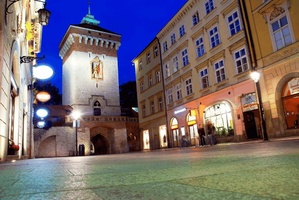
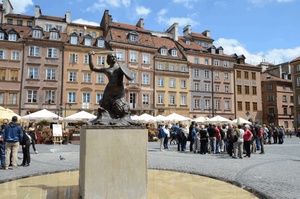
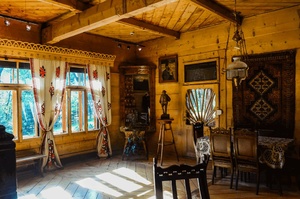
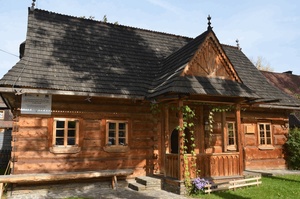
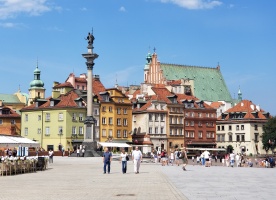
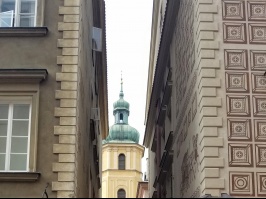
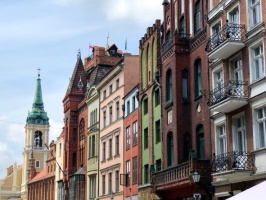 ` &else=`
` &else=`